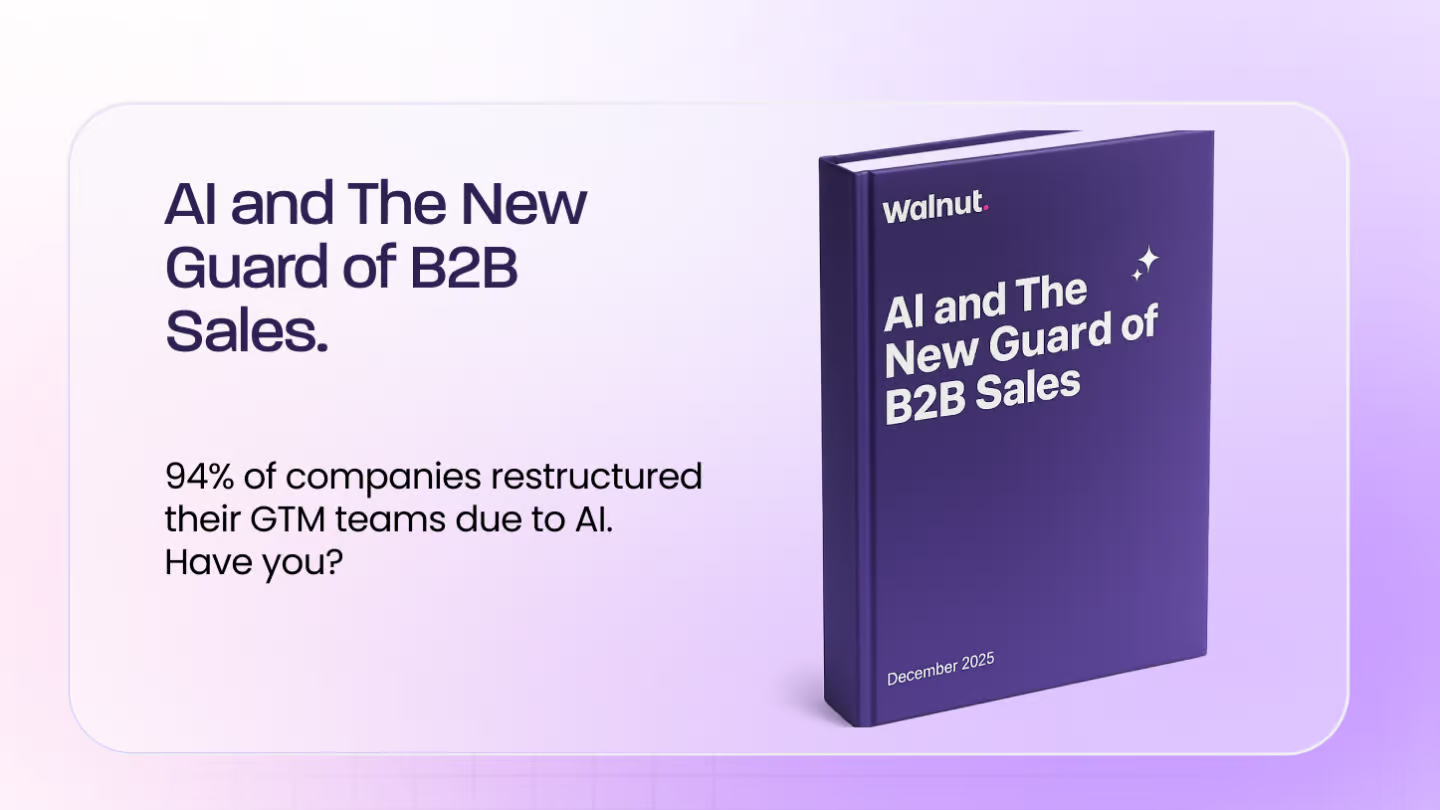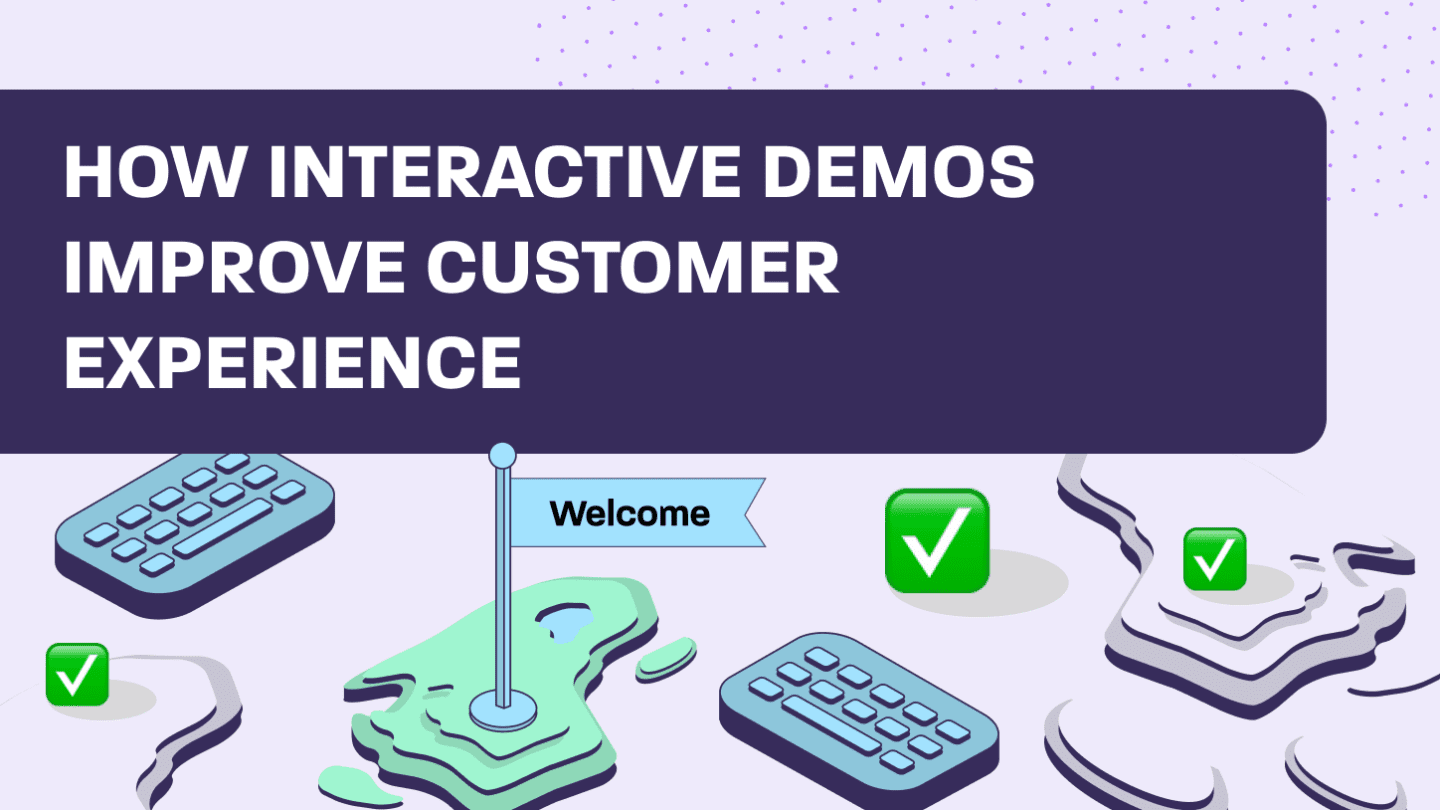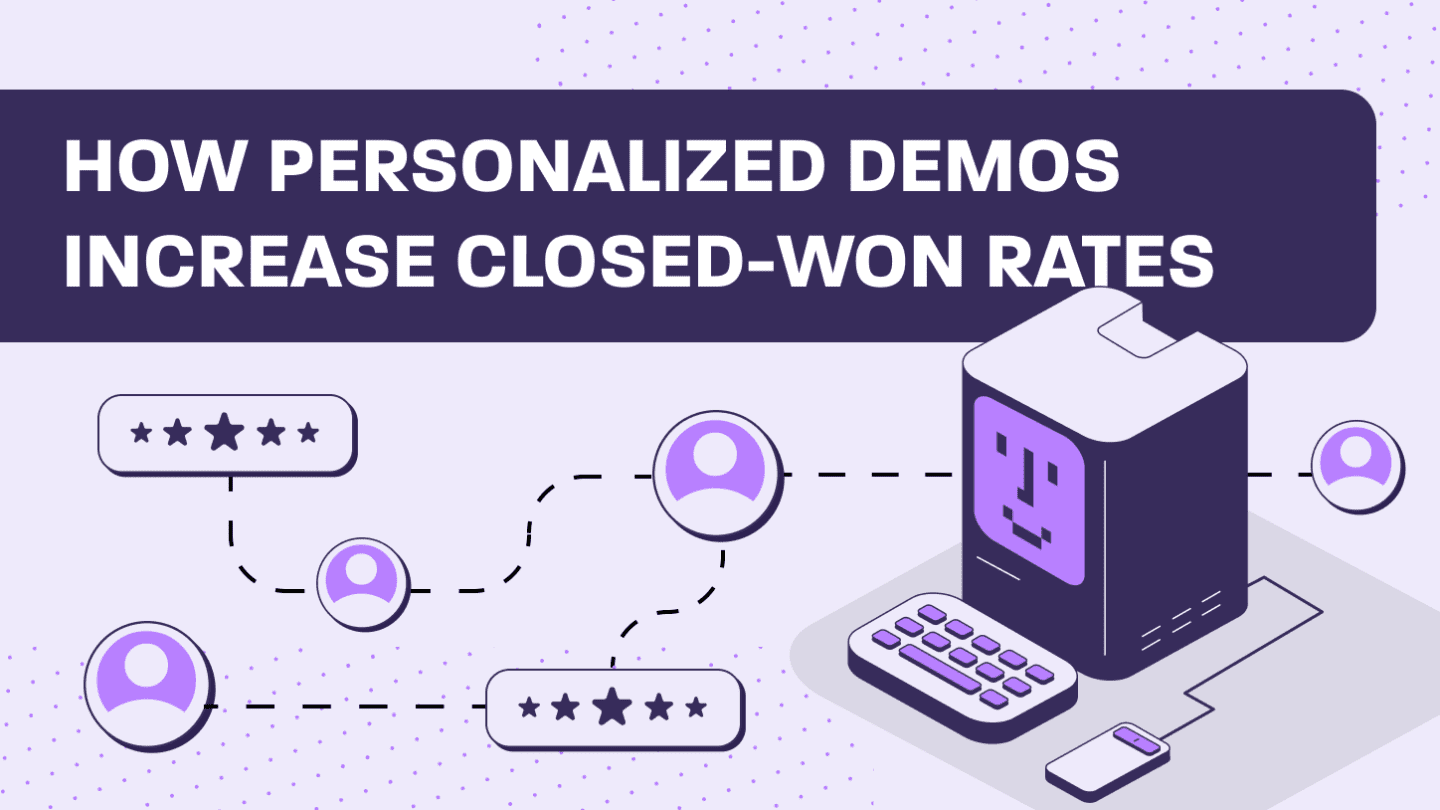You know when someone is talking at you instead of with you? You know that feeling when no matter what you say the other person responds in an already-prepared speech that doesn’t quite answer the topics you raised?
Well, in sales this happens a lot throughout the selling process and generally shows a seller-centric approach.
Think of how many websites overload the visitor with text and information that no one can quite understand just so they can mention all the million product features. Think of the salespeople who are pressured to hit every talking point from their sales enablement software to the point where they can’t simply have a normal conversation with their prospects.
Despite how seemingly tempting this is for businesses to do, it pushes customers away.
But what if I told you there’s another strategy?
Focus on your customer
Dale Carnegie, in his book How to Win Friends and Influence People, writes:
“I am very fond of strawberries and cream, but I know that fish prefer worms. So when I go fishing, I think about what the fish want… The only way to influence the other fellow is to talk about what he wants and show him how to get it.”
Just like you wouldn’t try to catch a fish with strawberries and cream, you can’t try to bring in customers by offering features and solutions that are not relevant to them. Instead create, market, and sell your product for the people who will use it.
This mindset is the gist of customer-centric selling.
What is customer-centric selling?
Customer-centric selling methodology (AKA customer-focused selling) is when your company and sales team focus their attention on the customers and their needs over everything else.
To continue with the examples given above, a customer-centric website would show rather than tell, and give visitors the chance to experience the product for themselves. Likewise, when it comes to a sales call, a customer-centric selling strategy would require the salesperson to engage in a dialogue with the customer in order to learn about their needs before offering a solution.
This customer-centric selling strategy encompasses an overall mindset that can present itself in many, many ways throughout the sales process and helps build strong relationships with prospects.
Are B2B sales currently customer-centric?
While there are many sales teams that working very hard to keep the customer in the center of the sales cycle, SaaS B2B companies by and large are failing to make buying their product easy.
It’s true and it’s as dire as it sounds.
Check out these stats about the B2B buying experience:
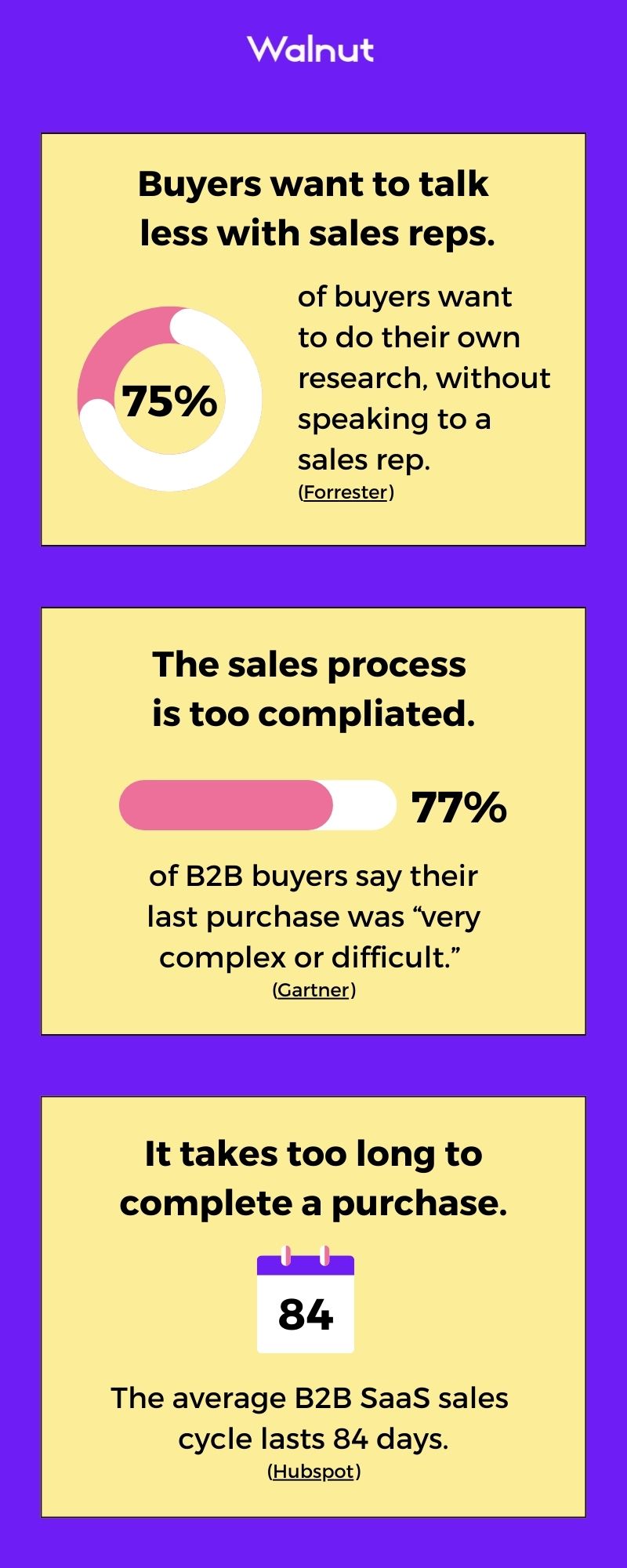
5 tips to put the prospect in the center of the selling process
As you can see above, the B2B sales experience has got to change. Here are a few tips to start the revolution.
1. Use interactive demos in your marketing
Customer-centric selling doesn’t have to start in the selling phase. Even in your marketing campaigns, you can be focusing your process on the customer by using a product-led growth strategy.
And this isn’t just for B2C. The desire to try the product for themselves before buying is relevant for B2B buyers too, with a report from Forrester finding that:
“Three to one, B2B buyers want to self-educate rather than talk to sales representatives to learn about products and services.”
So give your customers what they want by letting them play with your product in the marketing phase. You can do this by embedding an interactive product demo on your website and in your marketing materials. You can then use it to gather leads, understand your customers, and gain insights on what aspects of your product are more desired.
2. Listen and show empathy
“People will forget what you said, people will forget what you did, but people will never forget how you made them feel.”
This famous Maya Angelou quote is a useful reminder in life—but is relevant to sales as well.
When entering a conversation with a prospect, you need to come from a place of empathy if you want to make an impact. For the moment, you need to forget about the sale. You need to forget how much commission you could get from closing this deal or how badly your business needs this extra revenue. And you likely also need to forget the list of topics your sales enablement platform suggested you hit.
Instead, enter each conversation with curiosity and with concern. Be careful not to assume too much about the customer. Ask good questions to find out their pain points. Only once you feel like you understand their needs, concerns, and pain points, you can genuinely suggest areas where your product can help.
Not only will you now be able to better explain why they need your product to solve their issues, if the customer trusts you and feels you truly understand them, they are much more likely to believe that you can help.
Consider this advice from Mary Kay Ash, the founder of the multi-million dollar cosmetics enterprise Mary Kay Cosmetics:
“Pretend that every single person you meet has a sign around his or her neck that says, ‘Make me feel important.’ Not only will you succeed in sales, you will succeed in life.”
3. Respond to specific needs
Check out this quote from Walnut’s VP of Sales:
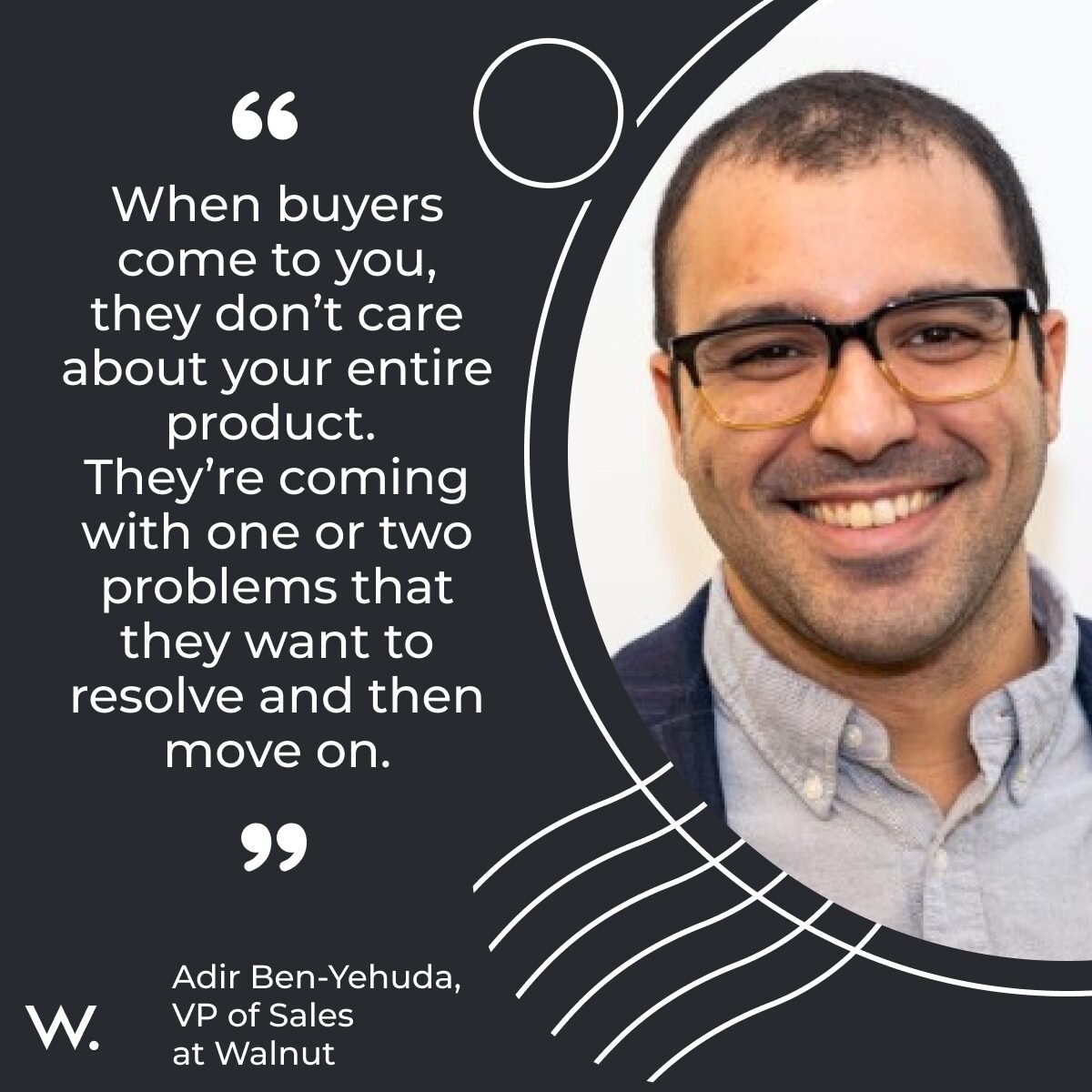
So many times, salespeople get distracted by all the details about their own product that they forget who they’re talking to and what their goal is.
When talking to prospects, you need to listen to their specific needs. It doesn’t matter how many cool tools your product can offer or the countless ways your platform is better than the competition. What matters is what the specific customer you’re talking to needs and whether you can provide it.
When the prospect talks about their needs, forget your checklist of topics you wanted to cover in the sales call. Instead, listen and respond with the specific solutions you can provide.
4. Personalize the sales experience
In B2B sales, while it’s crucial to understand your own product, it’s also crucial to understand your prospect’s.
In fact, according to a LiveHive survey conducted by Harris Poll:
“Almost 9 in 10 respondents said that outreach personalized to their company’s industry (e.g. knowing their business, changing industry needs or technologies) is either absolutely essential (42%) or very important (47%) when vendors initially reach out to them.”
Spend time before your sales call researching the prospect so that you can speak to them in a language that is relevant and about topics that are interesting to them.
Visit the company’s website, check out their social media, find out their company size, and get to know their product. Then, determine who in the company you’ll be talking to by using LinkedIn or visiting the About section of their site.
With this information, you can hypothesize pain points that they have and gain an idea of how you can serve them.
Once you do this, you should also create a personalized interactive product demo that’ll give the prospect the chance to experience your product—looking exactly how it’ll look, feeling exactly how it’ll feel, and providing exactly the tools they need.
5. Add value
Here’s an important lesson that Zoominfo’s VP of Sales, Lou Wolf, told us in his Nuts About Sales interview:
“You can’t just talk about ‘We do this and we do that.’ You have to help them understand where the value is, and why it matters to them.”
In a sales call, while the goal of the salesperson is to make the sale, the goal of the buyer is not to buy. Usually, the customers don’t really care about the salesperson or the product itself. Instead, they care about the added value this conversation can bring them.
Remember this when talking to your customers. While you can talk about what your product can do in order to add value, you can also add immediate value by sharing relevant tools, information, or resources that can help the customer now. And this doesn’t even have to be in your field.
Adding immediate value to the customer helps them build trust in you that you can truly assist them with their pain points. It then makes it easier to talk about the impacts your product can have on the customer’s company as a whole, on individual workloads, on stress management, and on minimizing resources.
8 Differences Between Seller-Centric and Prospect-Centric Sales
Centering your sales process around the customer is a practice that often requires tune-ups. To stay on top of your game, check out our chart on the differences between seller-centric and prospect-centric sales.
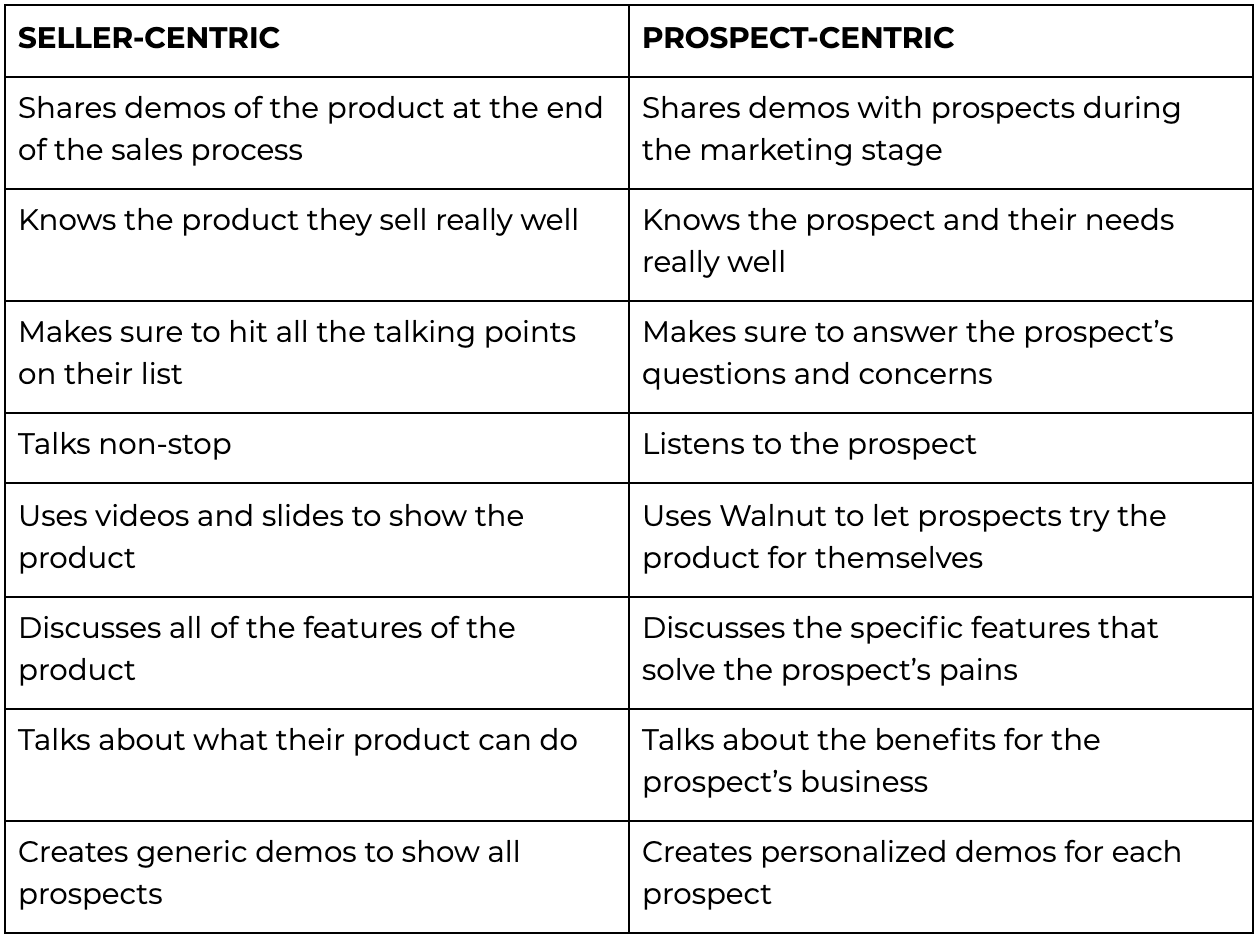
The future of B2B sales
The truth is that for a long time now, B2C businesses have been doing a better job with customer-centric selling. The B2B sales experience, however, has stagnated.
Like B2C, B2B prospects also want to have the same experience as they do at Amazon, Target, and Walmart. For this reason, we hosted a roundtable discussion with many of the industry leaders to discuss this topic. Watch the full conversation or check out some highlights from the event.
But at the end of the day, there’s a lot you can do to make your sales strategy more customer-centric. For example, on the top of our heads, we think you should probably book a product demo meeting with Walnut to start adding personalized, interactive sales experiences to your selling process.

